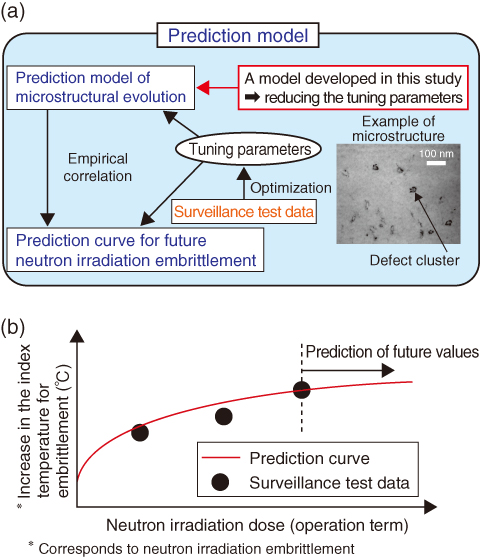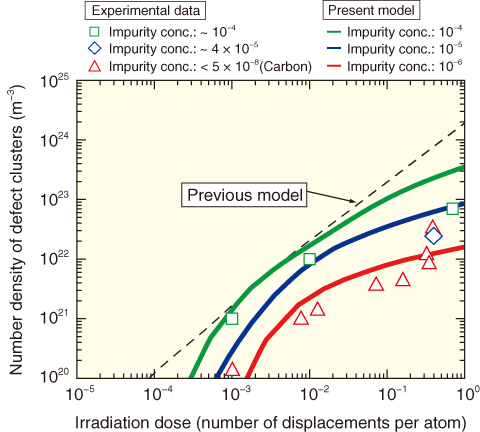
Fig.4-9 Schematic of the model used to predict embrittlement due to neutron irradiation

Fig.4-10 Density of defect clusters as a function of neutron-irradiation dose
Metallic materials subjected to long-term neutron irradiation due to fission in nuclear reactors suffer microstructural modifications, which result in neutron-irradiation embrittlement of these materials. To understand and predict the rate at which irradiation embrittlement proceeds is thus a vital issue for ensuring the long-term integrity of nuclear reactors.
Fig.4-9 shows a schematic of the current model used to predict neutron-irradiation embrittlement. The prediction curve is estimated by solving empirical equations that correlate the calculated microstructural change to the increase in irradiation embrittlement. By optimizing the parameters involved in reproducing data on irradiation embrittlement obtained from surveillance pieces, the future integrity of nuclear reactors can be predicted. However, these parameters must sometimes be significantly modified, especially as the operating life of nuclear reactors increases; hence, improving the accuracy of the model used to make these predictions is a crucial issue.
To address this issue, we modeled how the migration of defect clusters (produced by irradiation) is affected by impurity atoms as fundamental physical processes that were not considered in previous models. With this approach, we aim to develop a versatile model capable of treating various metallic materials and irradiation conditions in a unified fashion. Based on the latest results of research on how impurities affect the formation and the growth of defect clusters (which is one of the primary causes of irradiation embrittlement), we developed a model to predict the microstructural evolution of materials and demonstrated its validity. Fig.4-10 shows how defect-cluster density depends on the neutron-irradiation dose in pure iron, which is the basic material of nuclear reactors. This model reduces the range over which parameters must be tuned and significantly improves the consistency between model and experimental data (e.g., it reproduces the saturation in defect density upon increasing neutron-irradiation dose and the defect density as a function of impurity concentration).
This result shows the importance of incorporating more fundamental physical processes into prediction models. By further developing the present model, we expect to improve the accuracy with which the increase in neutron-irradiation embrittlement is predicted, thus better securing long-term operation of nuclear reactors.